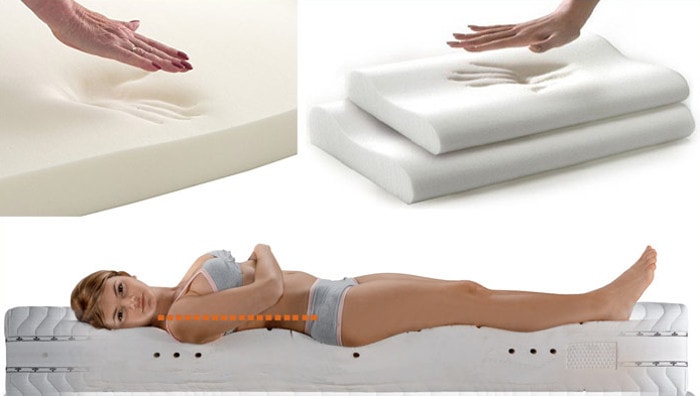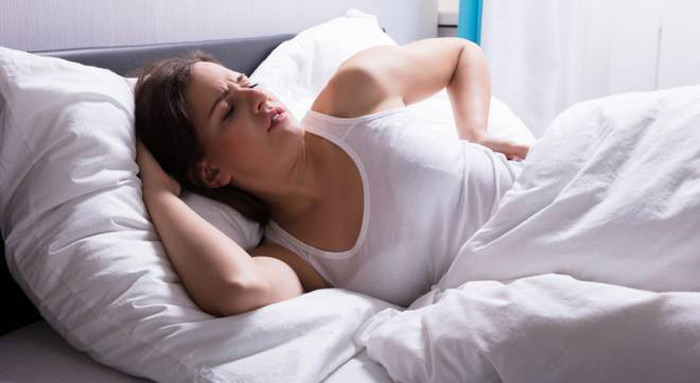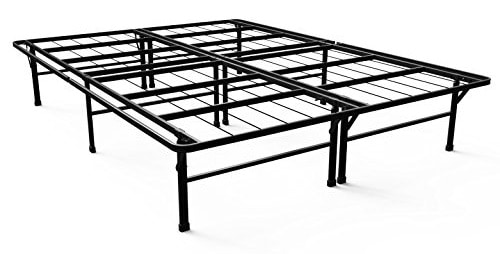When buying a new mattress it can be difficult to make the right choice. Do you need a specific type of mattress to meet the needs of any medical condition you may have? Do you sweat and heat up in bed during the night, or does your partner disturb your sleep when they move around in bed? Would you be happy with a soft foam mattress, or do you prefer a mattress with a level of bounce suitable for an active sex life?

There are many other circumstances that could have a significant bearing on the type of mattress you may ultimately choose. Most people need a little assistance in making that choice, and here are some questions that people tend to ask us in order to help them choose the right mattress for their needs. Many may be irrelevant to you, but you may find an answer to the question that helps you make a final decision.
Most manufacturers recommend you buy a new mattress every 7 – 10 years, many experts quoting 8 years. In practice, a mattress can last longer than this or might need replacing even sooner. You certainly need to replace it if you feel it lacks the support it once provided, is sagging or if it has developed a significant body impression. You can often delay these issues if you can flip or turn/rotate your mattress regularly. Old mattresses can also be filled up with dust mites, discarded skin cells, and bacteria so a time-related replacement of 10 years would seem reasonable, if not sooner. Find more information in our guide on When to Replace a Mattress.
A lot depends on what you mean by the word ‘Type’. There many different types of mattresses including innerspring, all foam, hybrids (e.g. innerspring + foam). There are also mattresses designed for specific types of sleeper: side sleepers, back sleepers, stomach sleepers, and also for individuals or couples. Visit our guides for further information on mattresses for specific needs:
Back Sleepers Stomach Sleepers Side Sleepers Mattresses for Snoring
Heavy People Mattresses for Back Pain Information and Advice for Hip Pain at Night
We also offer an extra guide on the best type of mattress for various sleeping positions as opposed to recommending specific mattress brands.
The type of mattress you buy will depend on a number of different factors from weight and specific orthopedic conditions to whether you are single or sleep with a partner, or if you prefer foam to springs.
Assuming that you don’t have an unlimited budget you will want the best mattress you can get for your money. How much you should pay for a mattress depends on what you want. We shall assume we are discussing only the mattress here, and not an entire bed – because the foundation or base is a separate item and can often cost more than the mattress.
You can get a high quality mattress for well under $1,000, some as little as under $300. It is important to know the price range for the type of mattress you need. You cannot compare the price of a latex and polyfoam mattress with that of memory foam and innerspring mattress. So first, make up your mind on the type of mattress you need – or want!
Then check out the options available. You may find some good deals online that enable you to buy the same mattress for cheaper than if you purchased it from a physical mall store. You might also find some websites offering promotional coupons that allow you a certain sum or percentage off the sales price if you include the coupon code at Checkout.
All of that understood you should be able to purchase a good mattress for well under $1,000. However, the more you pay the more you get. Your sequence of thought should be:
1. What type of mattress is good for my medical condition?
2. If no medical condition, which is the most suitable if I sleep with a partner?
3. Then consider how you sleep: on your side, back or stomach.
4. Then which of the options now available do you feel suits you best: memory foam, latex or innerspring – or a combination of these.
5. Think of the life of the mattress. Do you want one that can be flipped over when it begins to wear? Most foam mattresses can be, while few innerspring mattresses can be, particularly those with foam layers on top and the spring unit at the bottom. A major problem with new mattresses is that flippable ones are more expensive due to fire regulations: both sides would have to be treated with fire retardant. Rotating a mattress (turning it so the head becomes the foot) is still possible, and goes some way to avoiding wear and impressions in the mattress.
6. Now check out the InsideBedroom website for our recommendations for mattresses that best meet the above requirements. Enter the phrase that includes your needs into the search box you will see towards the top right of each page accessed by our menu bars.
7. Now look at your budget and spend the most you are prepared to spend. That is how much you should pay for a new mattress.
Follow the above advice and you should be able to purchase a mattress that suits your needs at a price that meets your budget. There is genuinely no price you “should” pay because you should pay whatever price you can afford. You will spend around a third of your life on your mattress so keep that in mind. Nevertheless, there are a few reasons why you should pay more for your mattress than you can afford – and even fewer reasons why you should pay less than you can afford.
Memory foam folds itself round your pressure points, conforming to the curve of the lower back in back sleepers, and to the main pressure points of side sleepers: the shoulders and hips. A firm base support provides the overall support needed. Too firm a mattress will result in painful pressure points – particularly the aforementioned shoulders and hips. It can also lead to back pain due to the potential flattening of the curve of your spine in the lumbar region – the lower curve in the elongated S shape of your spine.
Our answer to the back pain question above explains how memory foam can be combined with a firm mattress support layer to provide a good bed for those suffering lower back pain. The same principles apply to those who find their mattress uncomfortable on their shoulders and hips, particularly with side sleepers. If you sleep on your side, memory foam will absorb the pressure at these points and improve your comfort in bed. The same is true for the shoulders and buttocks of back sleepers. You can find more about the benefits of memory foam here.
This is a problem many people have, particularly those that like to sleep on a memory foam mattress. There are two main ways of helping you stay cool during the night and still enjoy the benefits of memory foam. One is to purchase a mattress with an open structure memory foam and the other is to use one with gel beads mixed in with the foam, otherwise known as gel memory foam.
The open structured memory foam absorbs heat into the small air cavities within the foam. The gel system is the most commonly used technique of keeping a memory foam mattress cool. The foam is infused with tiny beads of gel that change phase from solid to liquid as they absorb heat and cool your mattress from the inside out. An extension of this involves gel memory foam on top of an innerspring core. The spaces between the springs can absorb heat and between them, the two systems not only provide comfort and support but also help to keep you cool when they do so.
There are other ways of removing heat from a mattress or at least dissipating the heat you generate throughout the mattress. One way is to use copper to conduct away the heat. The Layla mattress uses this technology. Another way is to include carbon in the foam. Check this out here.
Check out our review of the Cushy Beds mattress, which is #6 in our best latex mattress reviews where you will find a mattress whose Talalay latex foam is infused with graphite. The carbon absorbs the heat and conducts it throughout the mattress rather than it concentrating on the point of contact with the sleeper. This is another way of keeping you cool when sleeping.
There was a time when those with chronic back pain were recommended to sleep on a hard mattress. Today, thoughts on this have changed and a mattress that provides comfort and support is now recommended. The type of bed is immaterial – it is the sleeping surface that is important.
Keep in mind that when you see the term ‘orthopedic’ when used in relation to beds intended for those with pain in their back, shoulders, or hips, it is not necessarily a professional recommendation. Many so-called ‘orthopedic mattresses’ are no more than firm versions of their range of mattresses. So what type of bed should you buy if you have back pain?
Look for a mattress that offers good support and comfort. A hard mattress might provide no more than a hard sleeping surface. It may not provide much support or comfort for the part of your body that is giving you pain. Some might simply make your pain worse! What you need is a mattress that supports your pressure points comfortably while also helping to ease your pain. Many people find a medium hard latex mattress to suit them, or a mattress with a memory foam top layer and harder poly foam support layer beneath it. Check our best mattress for back pain review here.
How firm a mattress you should buy is a combination of personal preference and any specific orthopedic issues you may have such as lower back pain. It is advisable in most cases to avoid extremely soft or extremely firm mattresses (1-2 or 9-10 on a firmness scale of 1-10, 10 being most firm.)
If you are particularly light in body weight, then a softer mattress would suit you best: say 3 to 5 on the scale, and 7-8 if you are particularly heavy – even 9-10 in extreme cases. Those with lower (lumbar) back pain would likely benefit most from a mattress with a layer of softer memory foam on top and a firm support layer of denser poly foam beneath that. Alternatively, if you prefer latex, a Talalay latex for comfort and Dunlop latex for support.
Check out our Firm Mattress Vs Soft Mattress guide for more information.
The most common allergen is the dust mite! Dust mites are tiny creatures of the spider family that feed of your old, discarded flakes of skin. They and their droppings, in particular, are highly allergenic. You can reduce the number of these mites that infest your mattress by using hypoallergenic mattress covers or encasements. Some mattress manufacturers use covers that have been treated to eradicate dust mites.
Check the label and other information that comes with your mattress for any information on allergies. If you suffer from an allergy, then you are advised to use a hypoallergenic mattress topper or pad. You can find information on hypoallergenic toppers and pads here.
Both euro tops and pillow tops are extra layers of padding situated on top of a mattress. They are used to provide a comfort layer on top of a firmer foam mattress. So they both have a similar function, but what’s the difference? There are two major differences between a pillow top and a euro top: the way they are attached to the mattress and their overall thickness.
A pillow top is what it seems to be – a large pillow or gusseted foam or fiber layer sewn onto the top of the mattress. The stitching keeps it attached to the mattress. There is a gap between the pillow top and the comfort layer of the mattress. It, therefore, looks as though it is an additional layer of padding on top of the mattress rather than being an integral part of it.
So how about the euro top? This type of mattress top is also fixed onto the mattress and lies flush with all sides of it. The material used to fill the euro top is normally of a higher quality of fiberfill or foam that is used in a pillow top. It is not sewn to the top of the mattress but around its edges, making it look as though it is part of the mattress rather than an addition to it. Euro tops are soft and comfortable in the body of the mattress and firmer toward the edges.
Box spring bases generally meet the requirements of the majority of mattress manufacturers. Contrary to what many believe, they are less expensive than other types of a base such as a platform or slatted wooden foundations. Even though many manufacturers will recommend one, you rarely actually need a box spring base. In strict terminology, box springs are bases and the wooden platforms are foundations, although both terms tend to be used synonymously these days. What’s the difference between them?
A box spring base is fundamentally a layer of steel coils supported in a rectangular wooden frame, although steel frames are also commonly used. They resemble the old metal framed beds, where a spring base was supported by a metal frame that also supported the headboard and footboard. Box springs absorb more shock than solid foundations, but often do not give the same level of comfort. When you buy a mattress ask the seller for their recommended base or foundation, and try to go with that.
Check out our recommended memory foam foundations here and our review of box springs here.
You need a mattress with a bit of bounce in it. Avoid memory foam mattresses and regular poly foam mattresses (polyurethane foam) because they are unlikely to meet your needs. Memory foam will envelop you and sink when you lie on it, while polyurethane foam mattresses will also tend to hold you into the mattress. Maybe not as much as memory foam but it will still not meet your needs.
The best type of mattress for you will be a latex mattress – or at least a mattress with a latex top. There are two types of latex: Dunlop and Talalay latexes. Of the two types, Talalay latex is the bouncier and therefore more suitable to most people for sex. We say ‘for most people’ because some prefer the way that memory foam holds them on the mattress. Dunlop latex is softer than Talalay latex. For that reason, most young couples prefer the bounce of Talalay latex and the way it springs back when compressed. Check out our review of the Latex mattress.
You will usually spend around 8 hours in bed, which means a lot of contact of your body with your bedding, including your mattress. The recommended frequency for cleaning sheets and pillowcases is weekly, so a monthly vacuum and check for specific areas of spillage or dirt would seem reasonable. Vacuuming will clear your mattress of dust mites and other forms of contamination – and make sure you get into the seams!
If your mattress gets particularly soiled, or there are any spillages or ‘accidents’, then it is important for you to clean that up as soon as you can. Your mattress supplier or manufacturer may provide you with maintenance and cleaning. Visit our advice on cleaning a mattress here.
Frequently Asked Questions: Summary
These are just a few of the questions we have been asked relating to mattresses and bedding. If you have a question you would like answered, then visit our website on insidebedroom.com and ask us. We will be glad to help you.